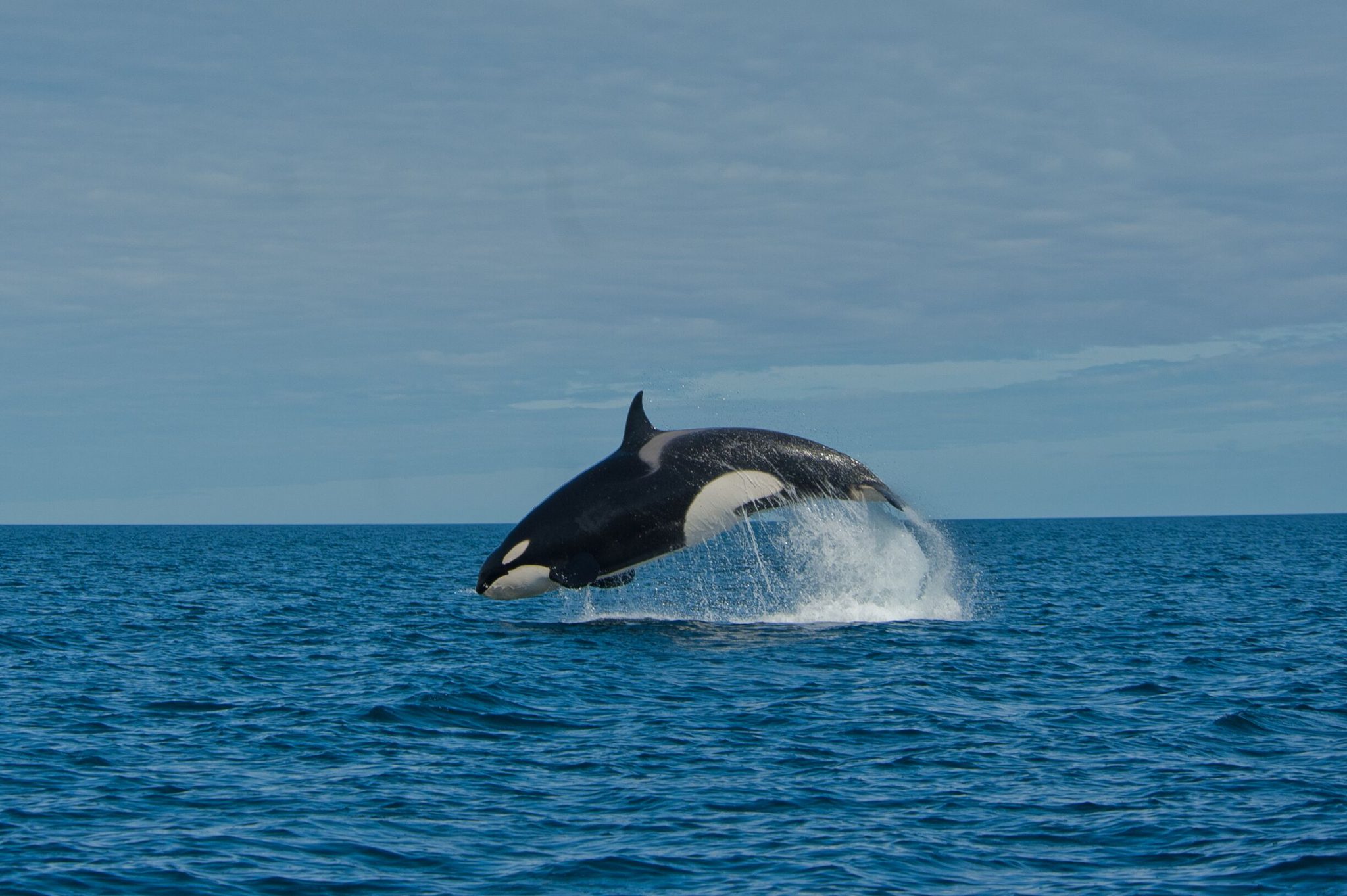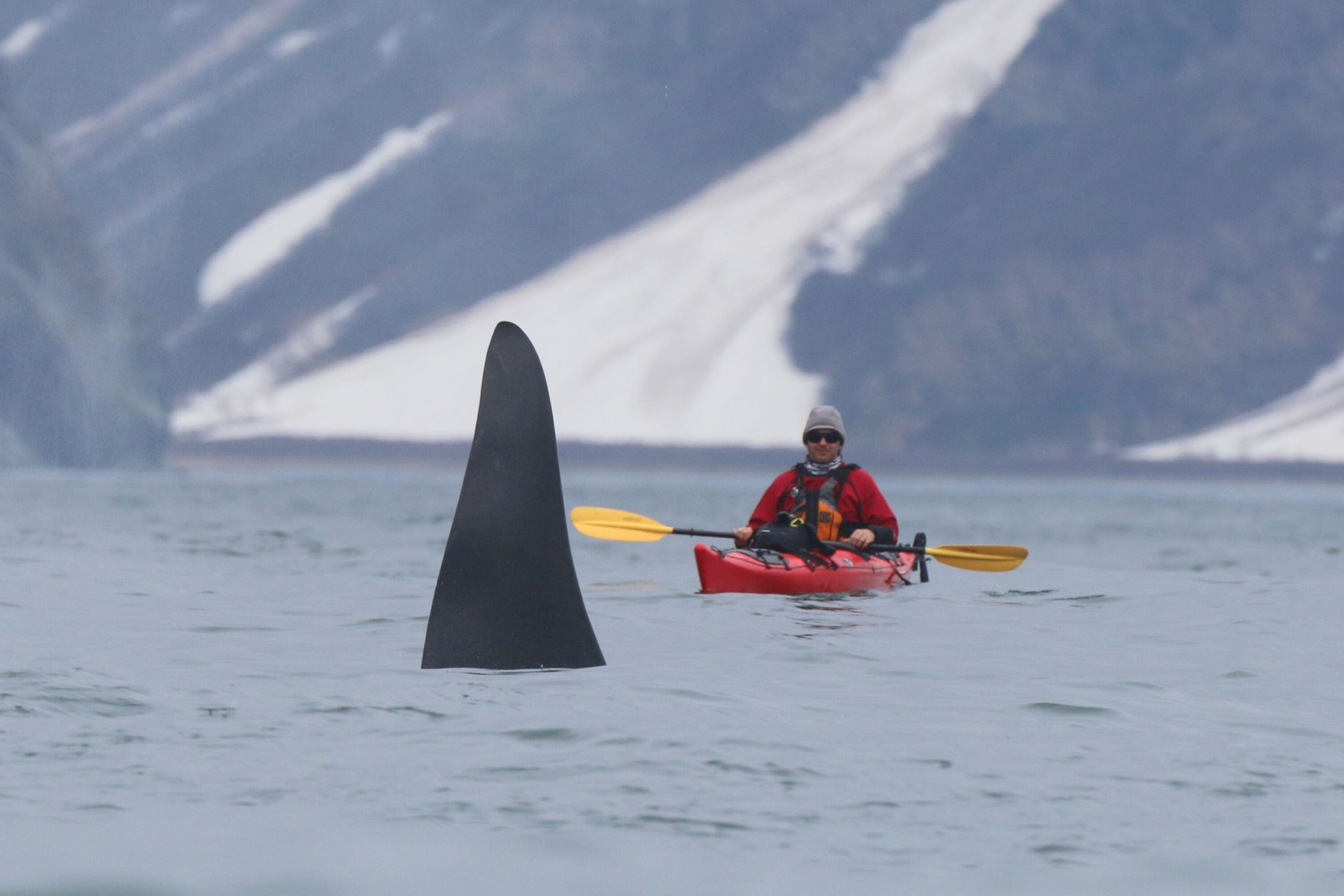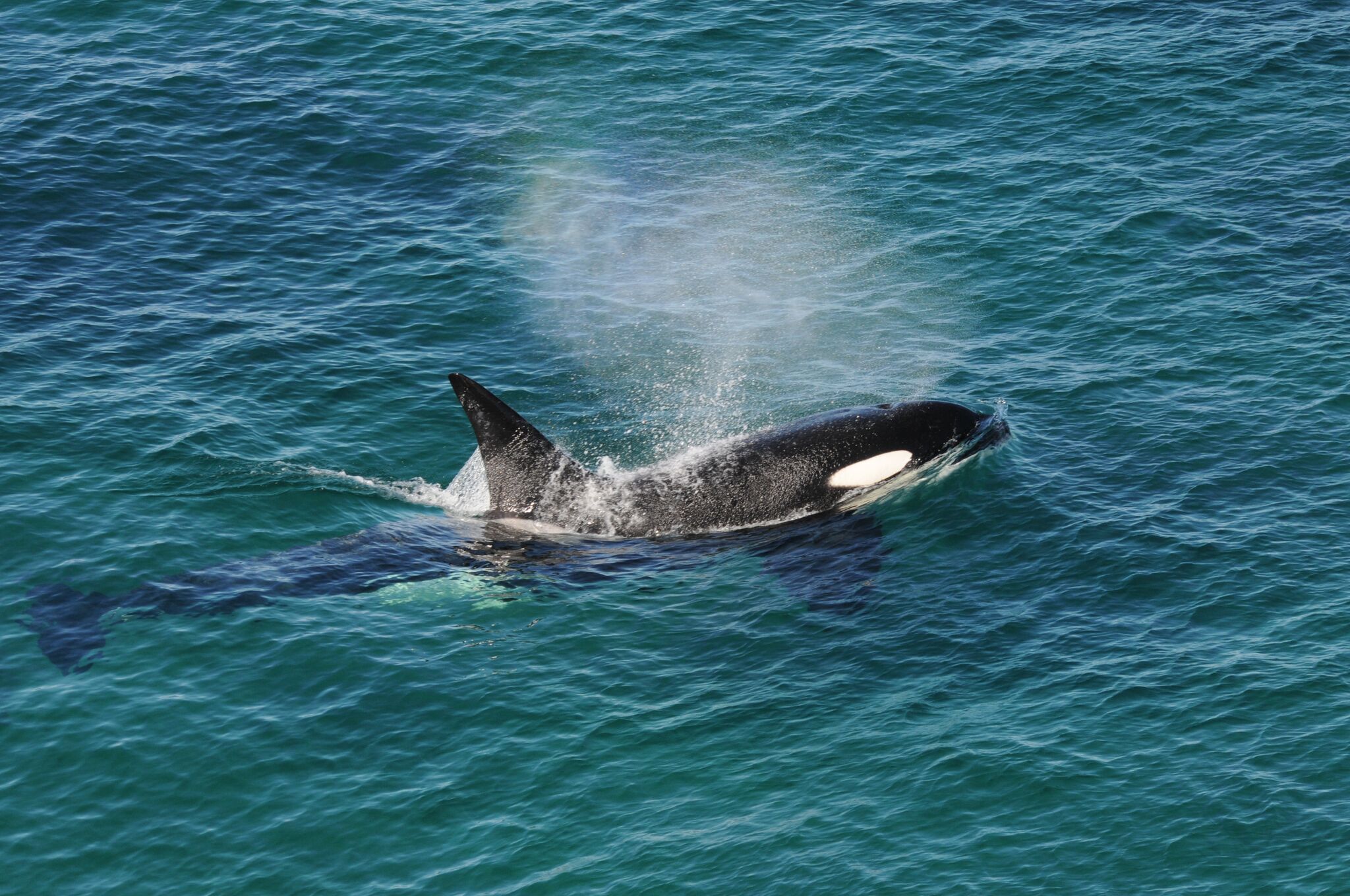 Find Out More About Orcas
Find Out More About Orcas
- With their distinctive black and white colouring, Orcas are widespread. Although they adapt to any climate and can be found in the coastal waters surrounding most countries, they prefer colder water and are usually found in deep water, within 500 miles of the shoreline.
- It is estimated that half the world’s population of Orcas live in the waters of Antarctica.
- Orcas are often called killer whales but they don’t typically attack humans. In fact, in the wild there has never been a single fatal attack on a human reported and only one bite on a human by an Orca has ever been recorded.
- The name ‘Killer Whale’ is due to their ability to take down large marine animals, like seals and whales. In fact, Orcas will prey on almost any animal they find in the sea or along the coastline.
- Despite being called killer whales, Orcas actually belong to the dolphin family Delphinidae. So, these highly intelligent animals are actually dolphins and not whales at all.
- As an apex predator, they are at the top of the food chain, with the only threats that face them coming from man in the form of chemical pollution, noise pollution, over fishing resulting a reduction in their food supply, and climate change.
- An average-sized Orca can eat up to 227 kilograms of food a day
- Aside from the black and white colouring, Orca can be recognised in the water due to their prominent dorsal fin. The dorsal fin can be a long as six feet in a fully grown male Orca.
- Orcas can grow up to 32 feet in length and their teeth can be as long as 10cm.
- They can swim at speeds up to 34mph
- The lifespan of an Orca is estimated to range between 40 and 50 years.
- Orcas are very sociable and live in pods of up to 40 members which are thought to be family based. There are two different kinds of pods. Resident Pods are less aggressive and tends to hunt fish. Transient Pods are much more aggressive and work together to hunt marine mammals.
- Orcas frequently breach, making graceful leaps out of the water before landing with a loud splash on their backs, sides or stomachs.
- Orcas also ‘skyhop’, slowly rising out of the water until head and almost all the flippers are above the surface before gradually sinking back out of sight. It is not uncommon to see several skyhopping together.
- There is a resident group or Orcas in the waters of the UK, known as the ‘West Coast Community’ consisting of just 8 individuals, 4 males and 4 females. Unfortunately, there hasn’t been a calf born to this pod in the last 20 years.
- Other pods of migrant Orcas visit Northern Scotland in early summer to feast on Herring and Mackerel and the occasional seal.
If you’d like to see Orca and a wide range of other marine wildlife, why not join us on one of our expedition cruises to Antarctica:


